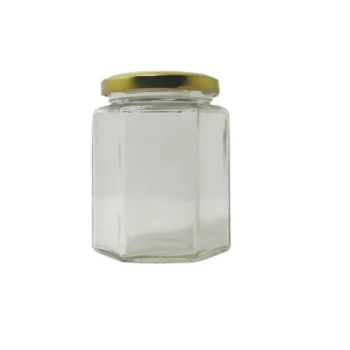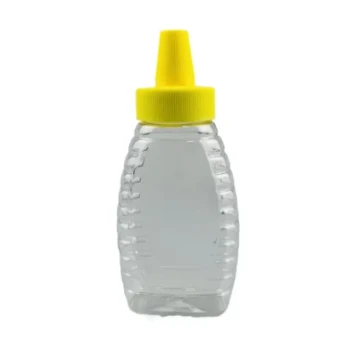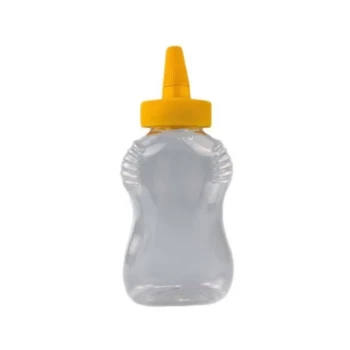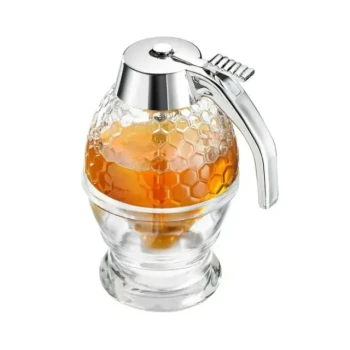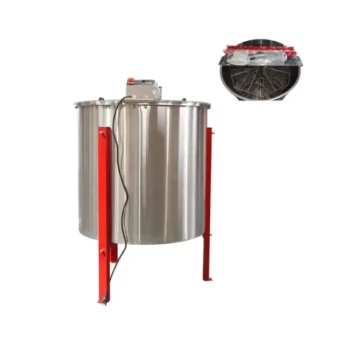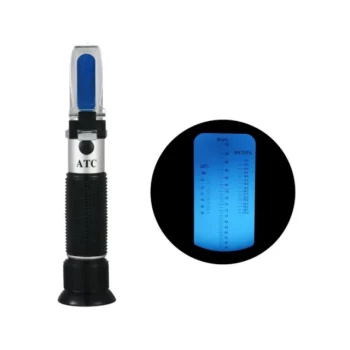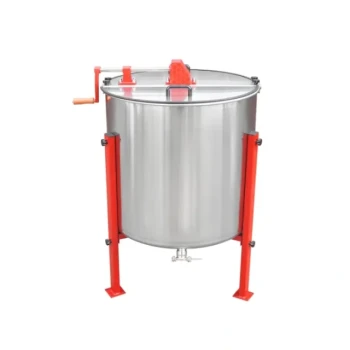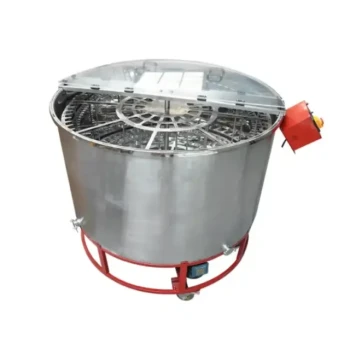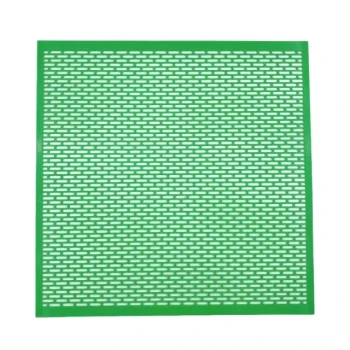To properly store liquid honey, the ideal containers are made of either glass or food-grade plastic. Both materials must be paired with an airtight lid to protect the honey from air and moisture, which are the primary drivers of spoilage. Glass is often favored for long-term storage due to its inert and impermeable nature, while food-grade plastic offers a lightweight and shatter-resistant alternative suitable for many applications.
The choice of a honey container is not just about holding a liquid; it's about preserving its unique flavor, aroma, and chemical stability. Your selection should be guided by your specific goals, whether for long-term preservation, convenient daily use, or commercial sale.

The Two Primary Materials: A Detailed Comparison
The debate between glass and plastic comes down to a few key properties. Both are excellent choices when used correctly, but they serve slightly different purposes.
The Case for Glass
Glass is the gold standard for long-term archival storage. Because it is completely non-porous and chemically inert, there is zero risk of the container imparting any flavor or chemicals into the honey.
This impermeability also means it provides a perfect barrier against atmospheric moisture and oxygen. Clear glass beautifully showcases the honey's color, while amber or opaque glass offers superior protection from UV light degradation.
The Case for Food-Grade Plastic
Food-grade plastic, particularly PET (polyethylene terephthalate), is a practical and safe choice for honey. Its primary advantages are that it is lightweight and shatter-resistant, making it safer and cheaper to transport.
These characteristics make plastic containers, especially classic squeeze bottles, a popular choice for retail and everyday home use. The key is to ensure the container is explicitly designated as food-grade to avoid chemical leaching.
Critical Factors Beyond Material
The container's material is only one piece of the puzzle. How you seal and store it is just as important for maintaining quality.
The Imperative of an Airtight Seal
Honey is hygroscopic, meaning it readily absorbs moisture from the surrounding air. An improper seal can allow the honey's water content to rise, creating an environment where dormant yeasts can activate and cause fermentation. A tight-fitting, airtight lid is non-negotiable.
The Impact of Light and Temperature
Direct sunlight and heat are enemies of high-quality honey. UV rays can degrade its enzymes and antioxidants, while high temperatures (above 75°F or 24°C) can darken its color and alter its delicate flavor profile.
Always store honey in a cool, dark place. For maximum protection, consider using opaque or dark-colored glass jars to block light completely.
Sizing for Your Scale
The right container size depends on your use case.
- Retail/Marketing: Small glass jars or plastic bottles (up to 5 kg) are ideal.
- Processing/Short-Term Storage: Food-grade plastic buckets with sealable lids (up to 20 kg) are common for beekeepers collecting and handling honey.
- Bulk Commercial Storage: Large 200-liter drums, typically made of food-grade plastic or stainless steel, are used for wholesale quantities.
Understanding the Trade-offs and Risks
Choosing the wrong container or reusing an old one can have significant consequences for your honey's quality and safety.
The Danger of Improper Materials
Never use containers made of non-food-grade plastic or reactive metals. Metals like iron, zinc, copper, or brass can react with honey's natural acidity, causing oxidation. This not only imparts a metallic taste but can also increase levels of toxic heavy metals in the honey.
The Risk of Second-Hand Containers
Avoid using second-hand or repurposed containers, even if they seem clean. Microscopic residues from previous contents or persistent odors can be absorbed by the honey, leading to contamination and off-flavors. Always start with new, clean, food-grade containers.
Plastic's Long-Term Permeability
While food-grade plastic is excellent for most uses, it is slightly more permeable to oxygen than glass over very long periods. For beekeepers or connoisseurs looking to store honey for many years, glass remains the superior choice for ensuring absolute purity.
Making the Right Choice for Your Goal
Select your container based on a clear understanding of your primary objective.
- If your primary focus is long-term preservation: Choose airtight glass jars and store them in a cool, dark place to maintain the honey's integrity for years.
- If your primary focus is retail sale and convenience: Use food-grade PET plastic containers for their safety, light weight, and user-friendly designs like squeeze tops.
- If your primary focus is bulk harvesting and processing: Opt for large, new, food-grade plastic pails with airtight lids for efficient and safe handling.
Ultimately, protecting the quality of your honey begins with choosing a container that is clean, inert, and properly sealed.
Summary Table:
| Container Type | Best For | Key Benefits | Considerations |
|---|---|---|---|
| Glass Jars | Long-term preservation, Archival quality | Impermeable, Chemically inert, Blocks UV light (if dark) | Heavy, Shatter-prone |
| Food-Grade Plastic (PET) | Retail sale, Daily use, Transport | Lightweight, Shatter-resistant, Cost-effective | Slightly permeable over very long periods |
| Large Plastic Drums/Buckets | Bulk harvesting, Commercial processing | High capacity, Durable, Efficient for handling | Must be new and food-grade to avoid contamination |
Protect Your Honey Harvest with the Right Supplies
As a commercial beekeeper or distributor, the quality of your honey is your reputation. Using the correct storage containers is the first step in preserving its flavor, aroma, and market value.
HONESTBEE supplies professional beekeepers and equipment distributors with the high-quality, food-grade containers and storage solutions needed for every stage of honey handling—from harvest to sale. We offer a range of wholesale supplies, including airtight buckets, jars, and bulk storage options, designed to meet the demands of commercial operations.
Ensure your product reaches the market in perfect condition. Contact our wholesale team today to discuss your container needs and secure your supply.
Visual Guide

Related Products
- Hexagonal Glass Honey Jar with Wooden Lid Integrated Dipper Elegant Functional Storage
- Hexagonal Glass Honey Jars with Metal Lug Caps Elegant Versatile Packaging
- Classic Beehive Honey Bottle Jar with Squeeze Dispenser Lid
- Food Grade Plastic Honey Bucket Pail for Beekeeping
- Inverted Squeezable Honey Jar with No Drip Flip Top Cap for Easy Pouring
People Also Ask
- What is the best container to store honey in? Preserve Purity & Flavor for Years
- What is the best container to store honey long term? Preserve Flavor & Quality for Decades
- What are the features of honey bottles? Design for Convenience & Long-Term Preservation
- Can you store honey in a plastic bucket? Yes, with the right food-grade HDPE.
- Why should honey not be refrigerated? Preserve its natural texture and quality.

